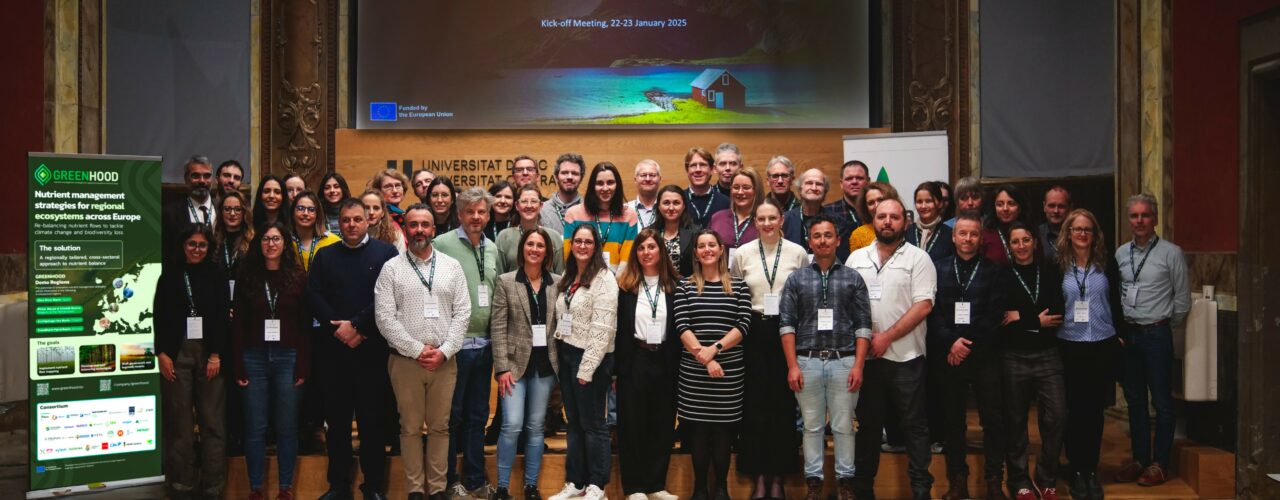
Nutrient balance and Resource Optimization in Regional Ecosystems through holistic, sustainable, and zero-pollution solution (GREENHOOD)
The main goal of Greenhood is to find an effective approach to balance nutrient streams and reduce nitrogen and phosphorus emissions. We will achieve this through targeted efforts in four selected areas in Europe. The project is based on methods for business budgeting that the participants have developed. We will also collaborate on testing various innovations, e.g. new fertilizer products, or new ways of monitoring pollution.
Project outcome

- Reduce nutrient losses from agriculture and aquaculture to soil, air and water
- Develop new solutions to manage excess nutrients, such as new organic fertilizers
- Facilitate collaboration across sectors
Project Implementation
Five countries (Spain, the Netherlands-Belgium, Norway and Finland) are responsible for four demo regions that face different challenges with excess nitrogen and phosphorus, both point and diffuse emissions. In Norway, the Trondheimsfjord/Trøndelag is defined as a demo region, and the project will map and optimize the use, recycling and discharge of these nutrients in agriculture and aquaculture.
The development of new types of fertiliser will run in parallel with the development of new value chains.
NORSØK is responsible for testing new types of fertiliser, in collaboration with NLR and NMBU. A farm biogas plant in Orkland, Svanem Biogas, is a key part of the project. With the separation of digestate based on cattle manure and fish sludge, there is a good basis for developing new types of fertilizer through various technologies such as drying, precipitation and nitrification.
Mapping the framework
For Norway, a model has previously been developed at NTNU that calculates surplus phosphorus in different areas (Mind-P). This model will now be further developed to include nitrogen. In this case, mass balance considerations and budgeting of nutrients are central. The project will provide a high degree of exchange of experience with other countries, and there is also a goal of spreading knowledge and methods to other regions in Norway that have similar issues. Regulations, management and financial framework conditions will be mapped and discussed, in particular how this framework affects the goal of increased utilisation and reduced emissions of nutrients.
Project leader in Norway is NTNU Industrial ecologi.
On total there are 31 partners from 10 European nations. Other partner from Norway are: Waister, NCE Aquatech Cluster, Future Innovations, Xylem, N2-applied, Proman.
Sub-contractor in Norway are NMBU, NLR, Svanem Biogass, Technische Universitât Wien.

